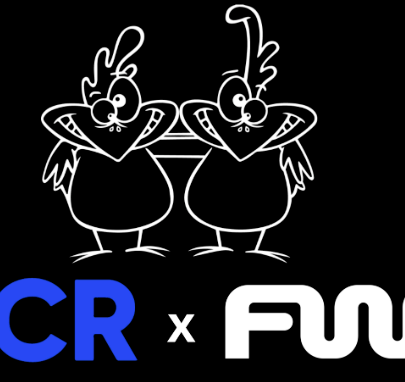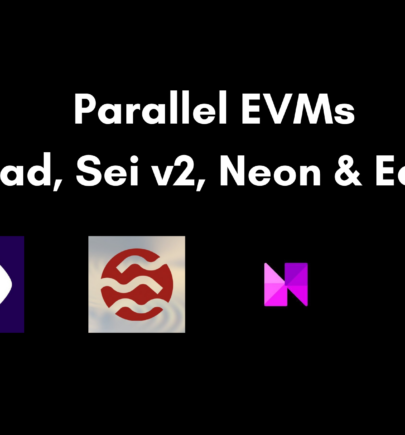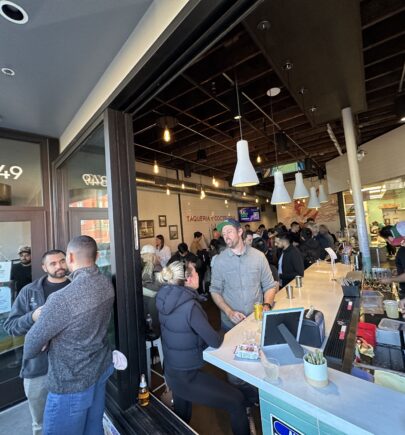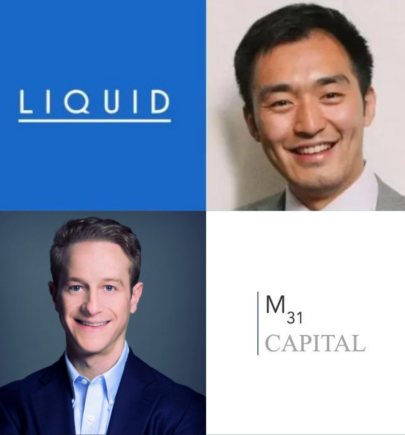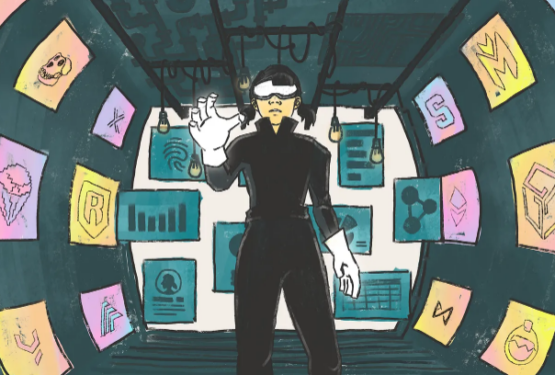Social Token as Financial Assets
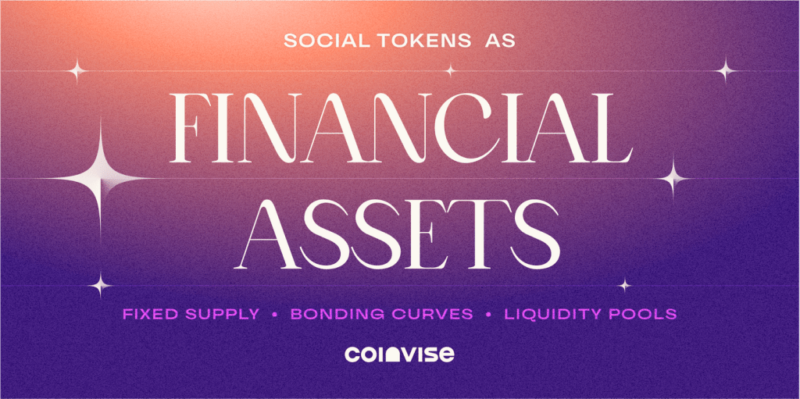
Hey friends! ?
As Social tokens grow in popularity, I often receive questions regarding the financial aspects of creating a Token. The two most common questions I hear are usually “what can you do with it?” and “Does my social Token have any value?”
First of all, you have to understand that by creating a Social Token, you’ll gain ownership over your content and have an easier way to collaborate with your community. What Social Tokens allow you, in the end, is unlocking different experiences with your community. You have control over the means and the production over what you create throughout the process. Instead of limiting the access (paywall in front of an article or a video), Web3 encourages collaboration and opens access to anyone wanting to build and collectively operate together. It’s a complete paradigm shift. It’s no more the Creator and its fan, but more a whole community driven by culture and values. Every audience will turn into a community, and every fan will turn into a partner. With Social tokens, you’ll have the power to incentivize anyone to help you achieve broader goals, meet new people and collaborate with others. You’ll finally have a direct relationship with your community and create new kinds of experiences instead of relying on centralized platforms that can potentially ban or censor your work at any time.
With Social Tokens used purely for its utility, your tokens can thrive in a niche community even though it has no monetary value. It’s more of a social, collectible value that people are proud to own. But to create real incentives around a joint project, the financial value of a Token has its importance. We’re seeing this unbundling of traditional employment where the individual is now the atomic unit. Traditional economic and cultural institutions will have less influence and power. Work will continue to disaggregate, and the next generation of entrepreneurs will be “solopreneurs.” But to create a whole new economy where every individual can thrive, we need creators to collaborate, and social tokens have shown their efficiency to incentivize individuals to share their skills with others. Financial aspects of Social Tokens are more than crucial as well-designed incentives can make your project tremendously grow. Remember that the more value your Token will have, the easiest it will be to incentivize contributors to participate. Social tokens are best used when they scale or incentivize coordination and engagement between communities. Incentives are ideal when it’s mutually beneficial to you and your community. This will create positive-sum games, where everyone has an aligned economic interest.
There are two main ways to create a Token. The first one is to make your Token on a Fixed Supply Model ; you’re creating a fixed supply of Token, the standard is 10M, and you can then distribute it to whoever you want in the way you want. The second one is to create it on a Bonding Curve Model ; you’re creating your Token on a Bonding Curve, which means the supply starts at 0, and every new Token created will cost more than the previous one.
There is no right or wrong answer, but there are fundamental differences between creating on a Bonding curve and a Fixed supply, and it’s essential to well understand those differences to make sure it fits your needs.
Today, we’ll go deep on the financial aspect of creating a Token, covering:
- Fixed Supply Model
- Liquidity pool
- Bonding Curve Model
- Which model you should use for your community
Let’s get to it ?
1) The Fixed Supply Model
1.1) What does that mean to create my Token on a Fixed Supply?
The fixed supply model is a model where you define beforehand the number of tokens you want to create. Having a fixed supply allows you to get directly in your Crypto Wallet a known number of tokens that you can share or give to incentivize your community to participate in your project. The industry standard is to create 10 million of your tokens but you can define the number of tokens you want to create. Successful communities such as Friends With Benefits or MetaFactory have minted (created) respectively only 1 million and 420k of their token.
The fixed supply model works more around personal tokens. If you’re a Creator that wants an easy solution to experiment with Social Token and create new experiences with your fan, you should hands down mint your token on a fixed supply.
The main advantages of creating your Social Token on a Fixed Supply model are:
- Usability and lower barrier to entry. Anyone can create its Token on a Fixed Supply. You’ll receive the tokens in your Crypto Wallet and can then distribute them the way you want. You don’t technically need a pre-existing community willing to buy your first Token. They are already created and exist on the blockchain.
- Full power over the distribution of the native Token. Centralized control over your token Supply prevents anyone from buying a significant amount of your token and using them in a harmful way. A safe and sustainable distribution strategy is critical for some projects – you must get your Token into the right people’s hands if you want the project to succeed. With the Fixed Supply model, you have the full power over the distribution.

However, in creating your Token on a Fixed Supply, you’ll be limited at one point if your project grows exponentially as you won’t be able to increase the supply. It’s also good to remember that when building on a Fixed supply, your Token has no inherent value as you’re the owner of most of the supply, and no one has put money into your project. With a token based on a fixed supply, you’ll create experiences that don’t require inherent value. Experiences that only live in your economy. We could think of a “control my life” type of experience, gated articles or content (your fans will need enough of your Token to read the article), tips for spontaneous help, etc.
Creating a token allows you to better collaborate with your community and create a new kind of relationship with your fans. Again, you own all the supplies, which means that the experience you’re creating only lives in your economy (we can’t redeem anything IRL for your Token) and that owning your Token is a social asset, collectible value, that your fans will be proud to own. Maybe more a “nice-to-have” than “must-have”.
As we’ve just seen, there are pros and cons to creating a Social Token on a Fixed Supply.
It’s also good to mention that creating your Token on a fixed supply doesn’t mean it will never have monetary value, and you can create a Liquidity Pool, set an initial price, and allow anyone to buy your Token. By doing so, you’ll allow anyone to buy your Token and, therefore, opening the doors for more people to join your economy and participate in your projects.
Adding value to your Token is not the first thing you should do when creating one. Indeed, you should first focus on making actual use cases for your Token and gather a strong community around your project. Without a strong community, you won’t increase your Token’s value as no one will be keen to buy it. Creating a liquidity pool is more a later stage action when you’ll want to accomplish new (and maybe more significant) projects than part of the initial tasks you should make when creating a token.
Let’s get into the fun part of Social Tokens: The liquidity Pools (LP).
2) Liquidity Pool
2.1) What is a liquidity Pool (LP)?
Put simply, creating a Liquidity pool means providing Liquidity for potential buyers. When you’re creating a social Token, this Token has no inherent value. You could have one million of your $NAME Token, it wouldn’t make you a millionaire in our society. Creating a liquidity pool (LP) allows anyone to buy your Token in exchange for other cryptocurrencies with value in USD. When the LP is created, a liquidity provider sets both assets’ initial price and equal supply. A liquidity pool is a collection of funds locked in a smart contract. Users can add the exact value of two Token (your Token + collateral, aka any other token) in a Pool and earn trading fees proportional to their share of the total Liquidity.
Liquidity Pools are most commonly set up on Uniswap, a trustless, decentralized exchange for Ethereum. If you’re unfamiliar with Uniswap, it’s a DeFi (Decentralized Finance) protocol that lets anyone add Liquidity (ETH + an equivalent dollar value of a token) to a pool (a collection of Liquidity from anyone, anywhere in the world.)
Users putting Liquidity in a pool are named Liquidity Providers, and they make a % of fees on every trade in the pools they participate in and are therefore incentivized to add Liquidity. Put simply, these Liquidity providers facilitate trading by willing to buy or sell a particular asset at any given time, thereby providing Liquidity and enabling traders to trade without waiting for another buyer or seller to show up.
Indeed, in many markets, there may not be enough organic Liquidity to support active trade. This means that, as your Token is new, the chances are low that every time someone wants to buy one, there will be someone ready to sell it at a fair price. So when you’re executing a trade on Uniswap, you don’t have a counterparty in the traditional sense. There doesn’t need to be a seller for the buyer to buy at that moment, thanks to the Liquidity providers who have already put some of your Token in a Pool, waiting for anyone to buy it.
Concretely, if you have some ETH you would like to swap (exchange) with the Creator’s Token, you would go in the $ETH/$NAME pool and make the transaction there. The number of Liquidity Pools you can create for your Token is mostly infinite. If you create pools with your Token and many other collaterals (Other crypto tokens), your fans will have the choice to buy your Token with a lot of other cryptocurrencies. Such as you can go to your bank and ask to exchange your EUR in USD because the bank has some liquidity in dollars (money in a safe deposit box that the bank can give you directly), you want your community members to be able to go on Uniswap and exchange their cryptocurrencies in your $NAME Token.
2.2) So why would you need to pool Liquidity for your Token?
You will need to pool Liquidity if you want to create a project that requires collaboration. By pooling liquidity, you’ll drive the value of your Token, define its price and allow anyone to purchase it.
While centralized exchanges match buyers and sellers to determine prices and execute trades, taking a fee on the transaction, Uniswap uses a simple math equation and pools of tokens and ETH to do the same job. By knowing the balance between the ETH and your $NAME token in a pool (supply & demand), the equation can determine the price of a particular token whenever someone buys your $NAME Token with ETH. If your $NAME Token supply decreases while the supply of ETH increases, your $NAME token price goes up.
Also, by creating a Liquidity Pool, you’ll create a place where anyone can buy your token and therefore participate in the project you’re building. By letting your community members invest in your project early, they will give you an equivalent dollar value of a token (ETH or BTC, for example) in exchange for some of your $NAME Tokens. It will give ownership to your fans and, as the value of your token increases (considering more people are buying it and assuming you still own a decent amount of your Token), you’ll get more money to realize your project.
Building on a Fixed Supply and creating on a later stage Liquidity Pools is a great strategy for personal Token (if you’re a solo creator) as you can in first time gather a strong community around a joint project, then, in a second time, crowdfund your project, bootstrap liquidity and ask your community members to supply Liquidity to facilitate trade on Uniswap.

However, suppose you’re creating a community around a broad vision (e.g., BanklessDAO) or building a protocol (e.g., Rarible protocol or Zora). In that case, it might be preferable to create your Token on a Bonding curve.
3) The Bonding Curve Model
3.1) What does that mean to create a token on a bonding curve?
The core idea of minting a token on a bonding curve is that its price increases as the supply or distribution of the Token does. The more tokens have been distributed, the higher the price. This means that early adopters can buy the Token at a much cheaper rate than when the supply increases over time.
Let’s take an example to illustrate what a bonding curve is. You’ve just launched your Token on a Bonding curve, and your best friend John wants to buy some. To make it easier, let’s say that your Token is on a classic (linear) bonding curve and that the price of the first Token is $1. John will pay $1 for the first Token, $2 for the second, for the third, $3, and so on. This means for John to get the first ten tokens, he will have to pay $1+$2+$3+$4+$5. Totaling at $55.
Now, let’s say your Mom wants to buy ten tokens. Your Mom’s tokens price won’t start at $1 but at $11 (as John already purchased the first ten tokens). Every new buyer pushed the price up by increasing the supply.
On the other hand, when someone sells a Token, it will be burnt (destroyed), decrease the supply, and lower the Token price. People that have bought your Token early (at a low price) and have believed early in your project will be rewarded by being able to resell their Token at a Higher price as the price is increasing with the supply (the more people believing in your project, the more the price of your Token will increase).
Creating your Token on a bonding curve greatly facilitates giving value to the token and allowing you to determine how the discovery price will work in the future. Indeed, a bonding curve has its own AMM (Automated Market Maker – a mathematical function that defines the price of your Token depending on different parameters) that allows you to choose the best model of bonding curve depending on your needs. You have way more freedom over the price discovery of your Token with a token minted on a bonding curve than on a fixed supply, and you can choose the type of bonding curve you want, depending on your needs.
3.2) Which type of bonding curve?
Before minting your Token, you have to choose which type of bonding curve you want. There are different use cases depending on the bonding curve you select. We won’t go too deep into the different types of bonding curves, but you should have a good overview of what’s possible and the use cases for each model, thanks to the graphic below.
The Reserve Ratio determines how sharply a Continuous Token’s price needs to adjust to being maintained with every transaction. The Reserve Ratio determines the price sensitivity of a Token and, by playing with it, you can create different models of bonding curves. We will cover three types of bonding curves: Linear, Sigmoid, and Negative Exponential Curve.

- Linear bonding curve (Top Left): A Linear “Classic” bonding curve allows a fixed and predetermined price discovery mechanism that rewards people for investing in you early.
- Sigmoid bonding Curve (Top Right): A Sigmoid Bonding curve is recommended for projects that reward the first believers (early investors) and set a high price for the late joiner. This bonding curve suits Meme, for example, where the first believers, those who hype up the project since the beginning, will profit over the people who join the project once it’s already mainstream. People who have joined before the inflection point will earn profit while others will likely lose money as the price will increase sharply after the inflection point.
- Negative Exponential Curve (Bottom Left): This curve is recommended for projects such as crowdfunding, when you want to reward the first believers but don’t want the late joiners to pay a high price as no one would help anymore past a cap.
As we’ve just seen, minting (creating) your Token on a Bonding Curve gives you more freedom over its price discoverability, and you should take the time to think about your use-cases to choose the best solution.
Conclusion
Now that we’ve covered what a Fixed supply model, a liquidity pool, and a Bonding curve are, you should clearly understand their differences.
To make it easier to understand, we’ll make a quick recap here covering the main differences between the fixed Supply and the bonding curve models and the pros and cons of each model.
Main differences between the fixed Supply and the bonding curve model :
- Tokens are issued continuously (bonding curve), VS tokens are issued at a given time (Fixed Supply).
- While in the Fixed Supply Model, you have full power over your Token distribution and own the whole Supply on day 1, in the Bonding curve model, it’s your community that mint (create) a new token every time someone purchases one.
Main advantages of creating your Social Token on a Fixed Supply model :
- Usability and lower barrier to entry. Anyone can create its Token on a Fixed Supply. You’ll receive the tokens in your Crypto Wallet and can then distribute them the way you want. You don’t technically need a pre-existing community willing to buy your first tokens. They are already created and exist on the blockchain. You own the whole Supply from day 1.
- Full power over the distribution of the native Token. Centralized control over your token Supply prevents anyone from buying a significant amount of your token and using them in a harmful way. A safe and sustainable distribution strategy is critical for some projects – you must get your Token into the right people’s hands if you want the project to succeed.
- Easier if you’re a solo creator creating a personal token. The Fixed Supply model will allow you to take your time and think thoroughly about how you want to build your project. By owning the whole Supply, you can allocate your tokens the way you want.
- You don’t need a strong community that is ready to pay from day one. As you own the total Supply, you can take your time to gather a strong community around a joint project. This is a great advantage compared to the Bonding curve model as, in the bonding curve model, the early adopters might buy the Token. Still, if the community is not big and strong enough, as the price rises, no one will buy tokens anymore and can kill the project.
Main advantages of creating your Social Token on a Bonding Curve model :
- Guaranteed liquidity: you can create a contract and have anyone be able to buy and sell your token right away. It can help bootstrap awareness and interest as backers know they have liquidity from day one. Tokens can be purchased or sold instantaneously as the bonding curve acts as an automated market maker (Market makers are agents that alleviate this problem by facilitating trade that would otherwise not occur. “Automated market makers” (AMMs) are algorithmic agents that perform those functions and, as a result, provide liquidity in electronic markets. AMM buys some of your tokens and agrees to sell them at any given time to anyone wanting to buy your Token.)
- Reduced volatility: in times of changing demand for the Token, the bonding curve allows both the price and Supply to adjust in response. Deterministic price calculation decreases the size and probability of boom and bust cycles that frequently plague fixed-supply tokens. Also, it ensures a continuous price. The price of your Token will always be n-1<n<n+1.
- Limitless Supply. There is no limit to the number of tokens that can be minted. You have no limits on how big your project can become.
- You have complete power over the future discovery price of your Token. As seen in this essay, you can adapt it depending on your needs.
- Reduces the risks of hacks. If your platform or project is hacked, as you don’t own all the Supply, it limits the risks. Tokens belong to the users that bought them and are on their wallets.
- Easier for a protocol or a community with more options. You usually don’t know the Supply you need as you don’t know if your project will grow exponentially. With a bonding curve, as long as there is demand, it will be possible to create new tokens.
If you want an easy solution for your personal Token, you should go with a fixed supply model for your Token. On the other hand, if you’re a big community founder of the Creator of a protocol that wants to launch a token, maybe you should consider creating a bonding curve and exploring the pros and cons of the different types of bonding curves.
In this essay, we showed, as clearly as possible, the differences between the two models and the reasons why you should choose one over the other. This essay should give you a good overview of the Financial aspects of Social Tokens and should help you make decisions thoroughly.
There are, however, still a lot more aspects that could be discussed regarding this subject. Suppose you decide to create your Token on a Bonding curve. Do you want to cap or uncap the total Supply? With which tokens do you want to bond your token (Collateral volatile or stable coin)? What pricing structure? How do you set up a treasury? What would be the best strategy to allocate the tokens with a Token minted on a Fixed Supply?
We need to on-ramp more people to those subjects and create more good educational resources to build the Future of Work. If you’re interested in collaborating in a second essay covering those subjects, please reach out on Twitter.
If you liked this article, you can tip the author and purchase the Red version & Blue version as NFTs (2/2). You can also follow him on Twitter.
Further resources :




